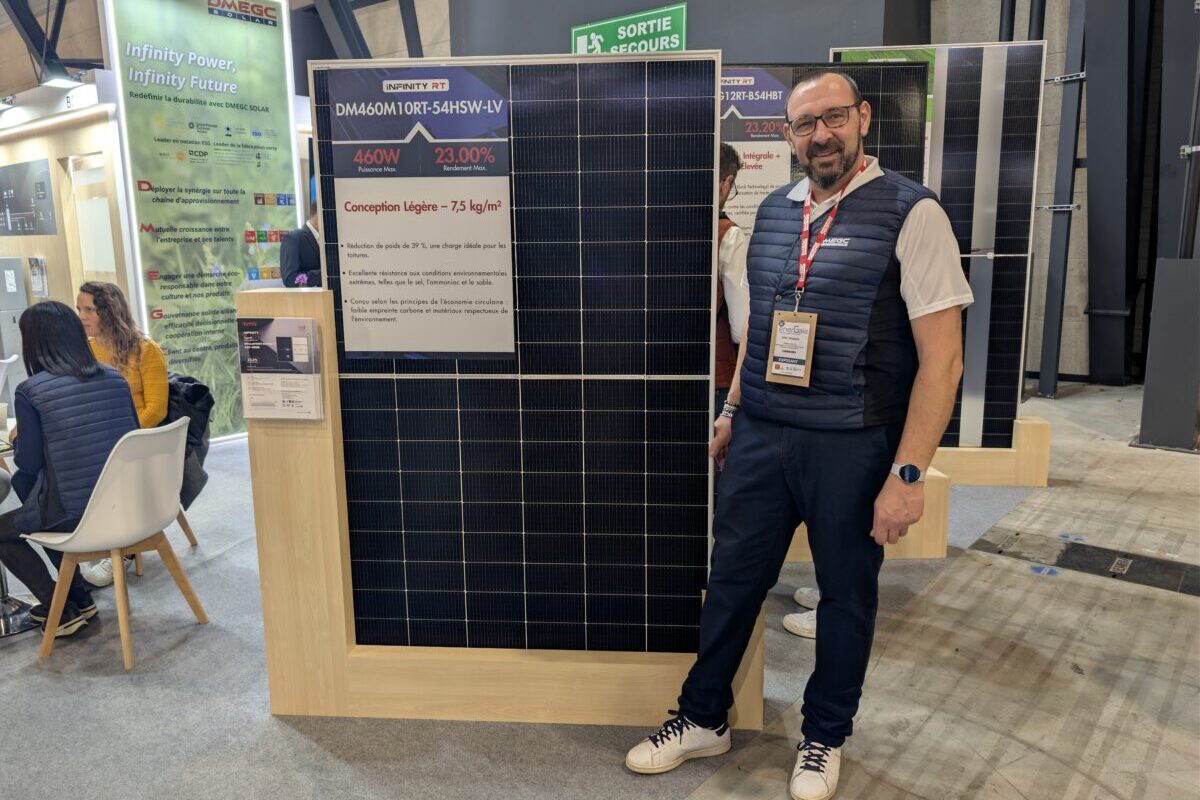U.S. industrial conglomerate Honeywell and Connecticut-based ZoneFlow Reactor Technologies announced a joint agreement to commercialize the ZoneFlow Reactor Technology. The two companies say that this technological development would provide a step-change improvement in the efficiency and carbon intensity of steam methane reforming for the production of hydrogen. “The ZoneFlow Reactor, a structured catalyst module that replaces conventional catalyst pellets in SMR tubes, provides far superior heat transfer and pressure drop performance,” the two companies wrote on Wednesday, adding that they will conduct reactive testing in ZFRT’s large-scale pilot plant at the Université Catholique de Louvain in Belgium. “The reactive testing will validate the expected 15% increase in throughput over conventional catalyst pellet systems. Results from the pilot plant testing are expected to be available by mid-2022.” ZF Reactors are structured catalysts for use in steam methane reforming to produce hydrogen. Compared to conventional pellet catalyst, ZF Reactors improve heat transfer into the reforming reactor by over 100% without increasing the pressure drop across the reactor.
The Namibian government wants to appoint Windhoek-based project development company Hyphen Hydrogen Energy as the preferred bidder to develop the country's first large-scale vertically integrated green hydrogen project in the Tsau -Khaeb national park. “The project, worth an estimated US$9.4 billion [€ 8.14 billion], will ultimately produce 300,000 tons of green hydrogen per year for regional and global markets, either as pure green hydrogen or in derivative form (green ammonia),” Hyphen wrote in a statement on Thursday. Following the conclusion of the feasibility study and sign-off from the government, Hyphen would have the right to construct and operate the project for 40 years. “The first phase, which is expected to enter production in 2026, will see the creation of 2 gigawatts of renewable electricity generation capacity to produce green hydrogen for conversion into green ammonia, at an estimated capital cost of US$4.4 billion [€ 3.81 billion]. Further expansion phases in the late 2020s will expand combined renewable generation capacity to 5 gigawatts and 3 gigawatts of electrolyser capacity, increasing the combined total investment to US$9.4 billion [€ 8.14 billion]”, commented Hyphen CEO Marco Raffinetti. Germany and Namibia agreed in August to establish a hydrogen partnership. Germany, the first country to set up a joint hydrogen plan with Namibia, will provide up to €40 million.
German multinational MAN Energy has announced that its gas-powered, four-stroke engines are “H2-ready” and operable in stationary mode with a hydrogen content of up to 25% by volume in a gas-fuel mix. “At the same time, we are working on future concepts that will enable hydrogen fuelling of up to 100% as soon as it becomes available in large quantities,” commented Gunnar Stiesch, head of Engineering Engines at MAN Energy Solutions.
The German government and the government of the United Arab Emirates (UAE) have discussed ways of establishing a framework for launching new action plans in the energy sector, specifically for green hydrogen and artificial fuel projects. “Launching the Emirati-German Bilateral Task Force on Hydrogen and Synthetic Fuels is a significant step that supports the UAE’s initiative to achieve climate neutrality by 2050,” commented Saeed Mohammed Al Tayer, CEO of Dubai Electricity and Water Authority. The UAE wants to step up cooperation with German companies, including Siemens Energy.
The German Bundesrat, a legislative body that represents Germany's 16 states at the federal level, approved an ordinance regulating in detail how the costs of a hydrogen network are determined. “By creating the necessary legal and planning certainty, non-discriminatory network access for all potential network users will enable effective competition in the hydrogen market. This means legal certainty for potential investors in the infrastructure. This is important because without transport pipelines an important prerequisite for the planned market ramp-up of hydrogen technologies would be missing,” the German government wrote on Friday.
The Port Authority of Valencia (PAV), together with the Valenciaport Foundation, and the Hamburg Port Authority (HPA) have signed an alliance to promote the use of hydrogen in collaboration and with the support of the European Union. “In this agreement, both entities will focus their efforts on hydrogen generation initiatives, storage stations, use of this energy in terminals and machinery, supply and transport in their hinterland, among others,” PAV wrote on Thursday, adding that the “Port of València will be the first port in Europe to incorporate hydrogen technologies to reduce the environmental impact of its operations.”
Norwegian state-owned energy company Equinor announced that Pre-FEED (Front End Engineering and Design) study contracts have been awarded to develop a 600 megawatt H2H Saltend low carbon hydrogen production plant, “one of the world’s first at-scale facilities to produce hydrogen from natural gas in combination with carbon capture and storage.” The company said that the study would also be used to support the delivery of a further 1,200 megawatt of low-carbon hydrogen production. “This hydrogen will be principally used to fuel the Keadby Hydrogen power station, which could be the world’s first large scale facility to use 100% hydrogen to generate power. These projects bring combined hydrogen production capacity of 1.8 GW, accounting for a third of the UK government’s 5 GW low carbon hydrogen production goal,” the company wrote on Thursday. The Keadby Hydrogen power station is being developed in partnership with SSE Thermal. Equinor’s H2H Saltend hydrogen plant and the Keadby Hydrogen power station are Equinor’s first two UK hydrogen projects. The focus is on the Humber region, the largest CO2 emitting industrial cluster in the UK.
Italy’s oil and gas major Eni and Paris-based industrial gas business Air Liquide have entered into a partnership to invest in the development of infrastructure necessary to allow the expansion of hydrogen mobility in Italy. “Firstly, the collaboration will include a feasibility and sustainability study for the development of the low-carbon and renewable hydrogen supply chain supporting the fuel cells vehicles market for heavy and light mobility. The partners will also identify the strategic locations for the positioning of hydrogen refueling stations in Italy,” Eni wrote on Thursday.
A research team led by Seattle City Light, Pacific Northwest National Laboratory (PNNL) and Sandia National Laboratories are conducting two studies exploring the potential of shifting from fossil fuel to clean hydrogen as fuel to power medium-and heavy-duty vehicles. These efforts are supported by two awards from the U.S. Department of Energy (DOE) totaling $2.12 million (€ 1.84 million) to help meet emission reduction goals set by Seattle City Light and the Port of Seattle. For now, the focus is on forklifts, drayage trucks and even cranes, but the institutions are also researching the option to use hydrogen to power cruise or cargo ships while they’re being loaded and unloaded. This option, however, is conditional on an adequate hydrogen supply, the institutions wrote in a press release on Friday. In the second study, the institutions are also researching the use of hydrogen “for propulsion for tugboats, commercial fishing vessels and passenger ferries,” while accommodating “a significant portion” of drayage trucks and cargo handling equipment serving the port. “Optimizing the system could avoid costly electricity transmission upgrades, while deploying new clean energy vehicles and equipment, and potentially even providing back-up power to essential city services in the event of temporary power loss,” commented Philip Jensen, PNNL engineer and project manager.
Australia’s Emerald Coaches, a Queensland private passenger transport operator, told pv magazine it is replacing 120 diesel-powered buses with hydrogen fuel cell electric buses in 2022. “Under the e-Mission zero project, the entree fleet will be replaced by hydrogen fuel cell electric vehicles producing zero emissions by 2040, 10 years ahead of the federal government’s net zero emissions targets,” the company wrote in a press release. It also explained to pv magazine that the investment will total $100 million (€64.10 million), adding it will be “Australia’s first private passenger transport company to introduce hydrogen powered buses.” According to Emerald Coaches, the hydrogen fuel cell electric buses will refuel in 3 minutes and will have a range of 800 km.
Melbourne-based renewables company Patriot Hydrogen has signed a joint venture with Singaporean renewable fuel technology company CAC-H₂. “Under the deal CAC-H₂ will become the lead technology provider, supporting Patriot Hydrogen’s projects to develop, build and commission Waste to Energy Plants – Patriot to Hydrogen (P2H) units. CAC-H₂ will be the exclusive technical and mechanical advisor and supplier for the modular, portable P2H units, which are designed to produce syngas, hydrogen, green energy, and biochar throughout Australia,” the company wrote on Wednesday. The joint venture is another example of collaboration between companies in Australia and Southeast Asia.
This content is protected by copyright and may not be reused. If you want to cooperate with us and would like to reuse some of our content, please contact: editors@pv-magazine.com.



Hydrogen from gas is an obscenity. Period. Why is this story on a renewables site?
Great info. My gutfeel is that hydrogen will eventually be the way to go.
A requirement should be that it is easy to convert to green hydrogen when required.